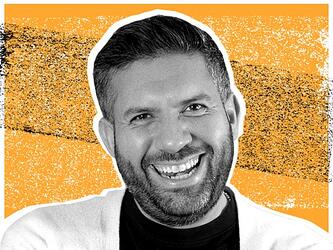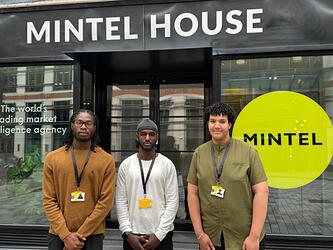A guide to digital ethnography
What is Digital Ethnography?
Digital ethnography is an agile online qualitative research methodology that leverages the power of smartphones to connect researchers directly with respondents. The approach has its roots in ethnography but differs in that the research happens remotely.
The results are powerful as the in situ research enables researchers to generate rich insights into real-life, in-the-moment, and in-context behaviors of respondents of different types including users, customers and patients.
Key Benefits of Digital Ethnography
1. Very authentic methodology
As behaviors are recorded and captured ‘in the moment’ it minimizes post rationalization – you are observing real-life behaviour not relying on respondents’ powers of recall. As an unobtrusive remote methodology, any influence on the part of the presence of the researcher is also removed.
2. Perfect for exploratory research
The approach helps surface insights that you may not have anticipated as you get a periscopic view into their lives enabling you to see them in their own contexts.
3. Removes group think
It also removes the effects of group bias prevalent in focus groups where one persona can influence the wider group.
4. Contextually rich approach
Digital ethnography gives researchers a ringside seat into the real-life everyday context of respondents helping researchers to better understand motivations.
5. Perfect complement to other research methods
The methodology works well as a complement to other forms of primary research e.g. the output from digital ethnography can form the basis of follow up IDI’s.
6. Ideal for multi-market research
As researchers can research without needing to travel it is an ideal option for multi-market research. Less travel means a reduction in cost and more time to spend on analysis. Cost savings become disruptimvely compelling if research in multiple countries is required.
Where can I use digital ethnography?
Digital ethnography is a very flexible methodology and the use cases are wide and varied. At Indeemo, the approach is used by a mix of user personas including:
- Qualitative researchers
- UI/ UX designers
- Dedicated research agencies
- In house teams
- Service designers
In terms of industry sectors, again it is popular across most industry sectors with particular sweet spots around those collecting sensitive data including Healthcare, financial services and certain FMCG categories.
Popular use cases include:
Video diary studies
Week in the life video diary studies can be used to better understand consumption patterns and to explore customer needs. Video diaries create rich datasets where respondents use their Smartphones to act as both directors and lead actors.
Pre-tasking before IDI’s
Pre- tasking using a digital ethnography platform like Indeemo’s can help you identify a subset of respondents that you can follow up with afterwards in more detail ensuring your time is best spent on those respondents with the greatest insights.
Marrying qual research to quant research
As mentioned above, the power of the approach can enable researchers to get to understand some of the people behind the data in a commercially viable manner. Bring your metrics to life with real users answering the why questions that you’ve been struggling to explain from the data.
User-centred design and product development
Digital ethnography can be leveraged to carry out user diaries and capture rich contextual needs and behaviors without the need to be physically present with the target user.
Concept and product testing
Make your creative concept and product design cycles more agile and iterative by using Digital ethnography to get respondents to record how they feel about your concepts / use your prototypes in their everyday contexts without the need to bring them to a central location or lab.
Path to purchase research
Digital ethnography enables you to ‘walk in the shoes’ of your respondents by getting them to record every milestone and moment while they navigate this journey.
Shopper research
Digital ethnography enables you to scale the number of shoppers you can research by getting them to record their shopping journeys via mobile screen recording and browser recording capability.
Customer journey mapping
Digital ethnography enables you to observe your customers’ journeys while they are interacting with your product, service, or experience adding a whole new level of insight into what’s working and what’s not.
Alan Gleeson is the Chief Marketing Officer of Indeemo, the leading digital ethnography application.

We hope you enjoyed this article.
Research Live is published by MRS.
The Market Research Society (MRS) exists to promote and protect the research sector, showcasing how research delivers impact for businesses and government.
Members of MRS enjoy many benefits including tailoured policy guidance, discounts on training and conferences, and access to member-only content.
For example, there's an archive of winning case studies from over a decade of MRS Awards.
Find out more about the benefits of joining MRS here.



[xy:120].jpg)










0 Comments